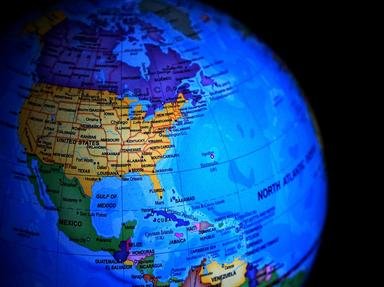Quiz Answer Key and Fun Facts
1. From our stopover in Stage 2 in San Diego we scoot east 500 miles into Arizona to travel to the Grand Canyon, where we visit the village home of the Havasupai tribe. The village is so remote it is inaccessible by road. How is the mail stubbornly delivered?
2. Just before we cross over into Mexico, it's time to take a brief sojourn from our road trip at the Plaza Hotel in Sun City, formerly known as the Six-Shooter Capital. Which Texas city in the Mountain Standard Time zone are we stopping by?
3. As we cross the Rio Grande River and move into the twin city of Ciudud Juarez in Mexico we are headed 1800 kilometres south to the Mexican capital. However we stop after only 380km at the city of Chihuahua, refuel and head 250km west to see what "Grand" sight?
4. Back to the city of Chihuahua, we are back on our trek down the Pan-American Highway. We stop off in Mexico City to visit one of the largest city parks in the Western hemisphere. Which of Mexico City's parks is home to a variety of attractions, including a castle, a zoo, and multiple museums, like the Museo del Caracol and the Museo Nacional de Antropología, but definitely no canals?
5. After leaving Mexico City we hit the Pan-American Highway, heading south. But before we leave Mexico, we decide to take a detour to see the Chicxulub crater. Where will we need to go to find this phenomenon?
6. As we cross the southern Mexican border we enter the first of the seven smaller Central American countries. Team Red members are asked if they could remember the mnemonic that lists all the seven countries north to south. There four replies. Which is correct?
7. As not many of Team Red have made it to Australia to see the Great Barrier Reef, they are keen to see a large reef system just off the coast of Belize. What is the obvious name of this reef?
8. While passing through Honduras, we decide to take a detour off the highway to visit Copán, a site of Mayan ruins close to the Guatemalan border. A hieroglyphic account, (on the way to heaven, perhaps) of the city's rulers can be found on which type of structure at the site?
9. While travelling down the Pan-American Highway through Costa Rica, we see the Guanacaste Range which has several volcanoes. Of course a detour is in order so we can visit the Rio Celeste. Which musically sounding volcano's surrounding national park features this lovely river?
10. It's been a long stage so we are in the narrow isthmus country of Panama in the capital city of the same name now resting in our hotel rooms overlooking Panama Bay. We are told to rise early to observe the sunrise. What geographical oddity causes an unusual circumstance?
Source: Author
1nn1
This quiz was reviewed by FunTrivia editor
agony before going online.
Any errors found in FunTrivia content are routinely corrected through our feedback system.
